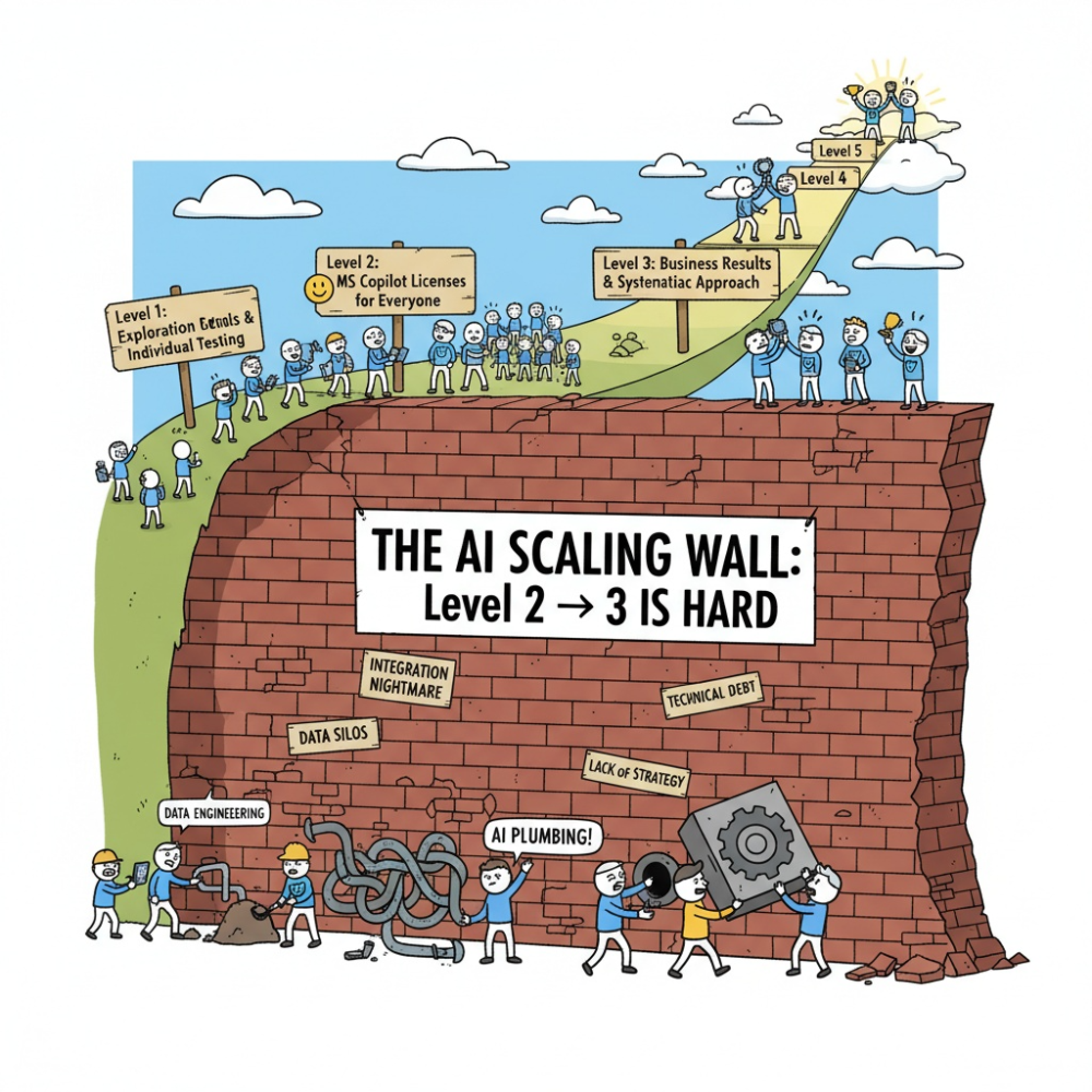Some views about the neuroscience behind resistance.
Most AI adoption strategies fail not because of technology limitations, but because they ignore fundamental human psychology. After studying change management research from leaders like Kotter, Kahneman, and Dweck, a clear pattern emerges: people don't resist change, they resist loss.
Building Humane AI Adoption

The Brain's Default Response to AILink to The Brain's Default Response to AI
When you announce an AI initiative, your employees' brains don't process "exciting opportunity." They process "potential threat."
Daniel Kahneman's research in Thinking, Fast and Slow shows us why: our automatic System 1 thinking activates threat detection faster than System 2's rational analysis can engage. The amygdala floods the system with stress hormones, literally reducing blood flow to the prefrontal cortex—the very region needed for logical evaluation of AI's benefits. This isn't weakness or stubbornness; it's neuroscience.
Three Neurological Truths About AI AdoptionLink to Three Neurological Truths About AI Adoption
1. Emotional Processing Precedes Rational AcceptanceLink to 1. Emotional Processing Precedes Rational Acceptance
Logic alone doesn't work because fear activates faster than reasoning. Before presenting AI's ROI, address the emotional transition. What specifically are people afraid of losing? Status? Competence? Job security?
Frame AI adoption around what people gain: more time for strategic thinking, enhanced expertise, freedom from repetitive tasks. As I outlined in my earlier AI Adoption Maturity Model, organizations progress through predictable stages—but only when the emotional foundation is solid.
2. Small Wins Create Neural MomentumLink to 2. Small Wins Create Neural Momentum
Success releases dopamine, making the brain seek more of the same behavior. Instead of comprehensive AI rollouts, design quick wins that solve real problems immediately. Let a marketing team use AI to generate first drafts. Have analysts use AI for data visualization. Build momentum through tangible value, not potential value.
3. Growth Mindset Unlocks AdaptationLink to 3. Growth Mindset Unlocks Adaptation
Carol Dweck's research shows that people with growth mindsets—those who believe abilities can be developed—see challenges as learning opportunities. Fixed mindset individuals avoid AI to protect their self-image. Cultivate growth mindset by celebrating learning over knowing, effort over innate talent.
The Four Pillars of Neurologically-Informed AI AdoptionLink to The Four Pillars of Neurologically-Informed AI Adoption
Psychological SafetyLink to Psychological Safety
People need to feel safe to experiment without career consequences. Amy Edmondson's work demonstrates that psychological safety is the foundation of learning. Create explicit permission to fail with AI tools. Share your own AI learning struggles.
Incremental ImplementationLink to Incremental Implementation
Overwhelming the cognitive system backfires. The brain can only process limited change before defaulting to familiar patterns. Roll out AI capabilities gradually, allowing neural pathways to adapt and strengthen.
Peer Influence Over Authority MandatesLink to Peer Influence Over Authority Mandates
Social proof is more powerful than executive directives. John Kotter's 8-step change process emphasizes coalition building precisely because peer adoption creates irresistible momentum. Identify natural AI advocates and amplify their stories.
Competence Building FirstLink to Competence Building First
People resist what makes them feel incompetent. Before introducing AI tools, invest in foundational digital literacy. Help people feel confident in their ability to learn, not just in their current expertise.
Moving Beyond Surface-Level ResistanceLink to Moving Beyond Surface-Level Resistance
The most sophisticated AI strategy fails if it treats resistance as a personality trait rather than a neurological response to perceived threat. Your "late adopters" aren't stubborn, their brains are doing exactly what evolution designed them to do.
The Path ForwardLink to The Path Forward
Successful AI adoption requires neuroscientific empathy. Understand that resistance is information about unaddressed fears, inadequate safety, or overwhelming pace. Adjust your approach based on where people actually get stuck, not where you think they should be.
The organizations winning with AI aren't just implementing better technology, they're implementing better change management that respects how brains actually work.


